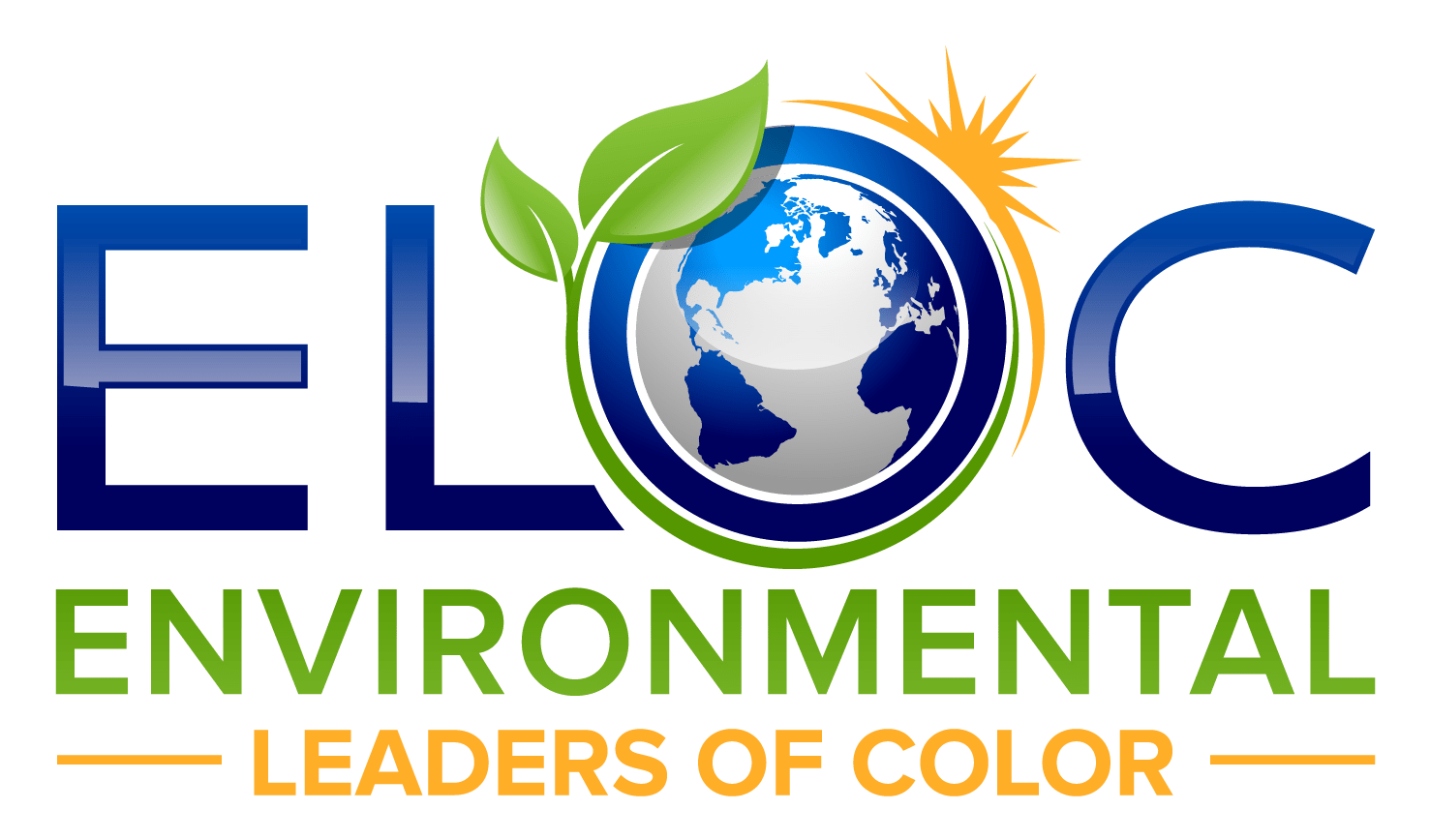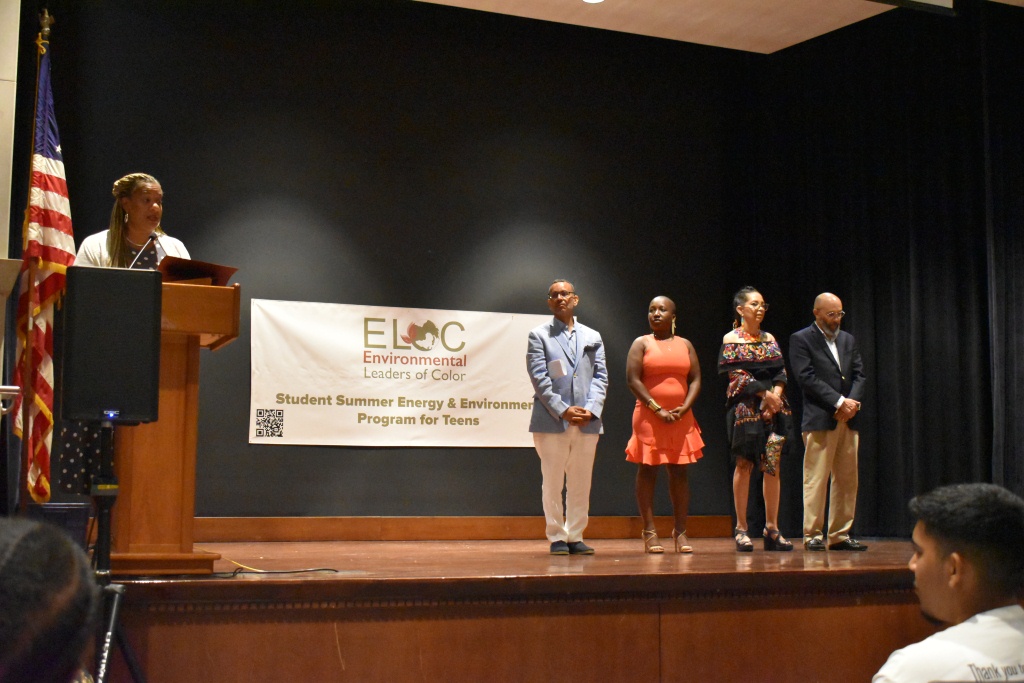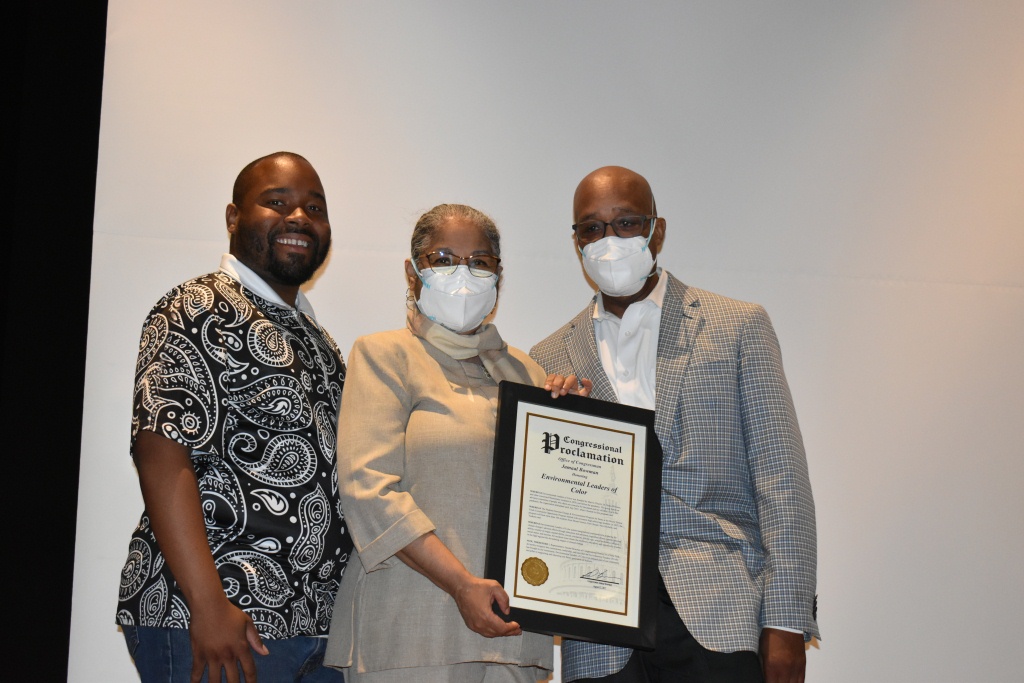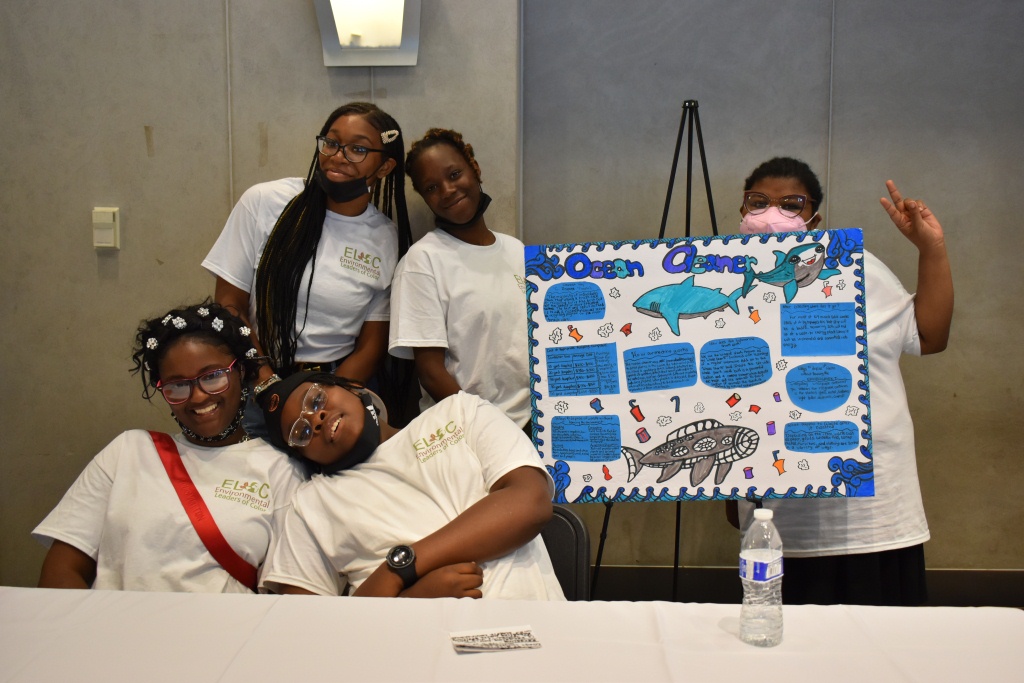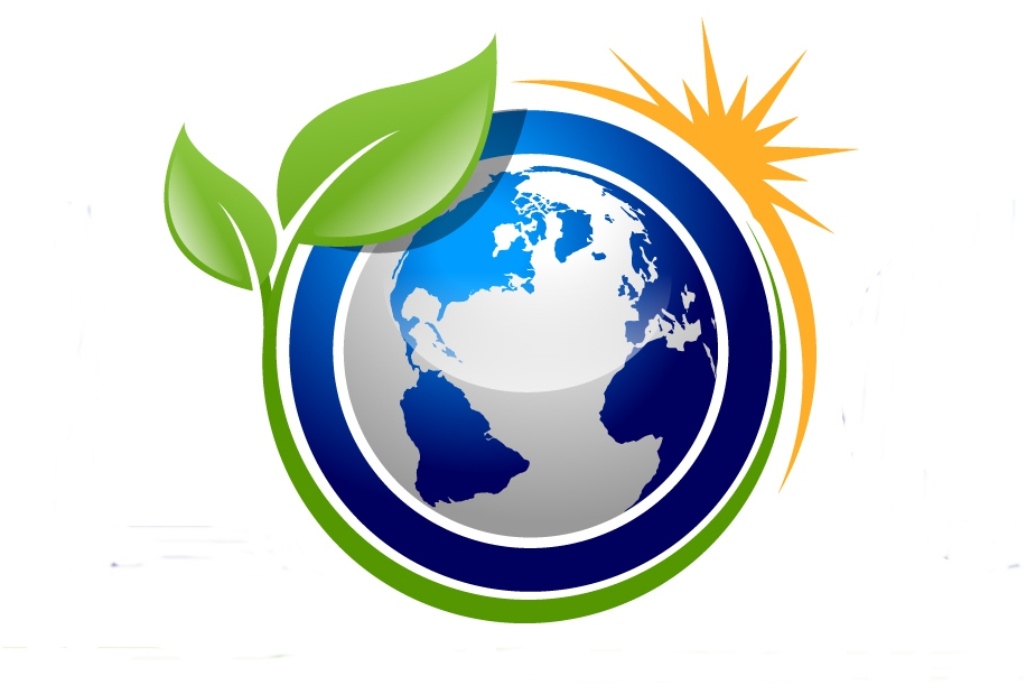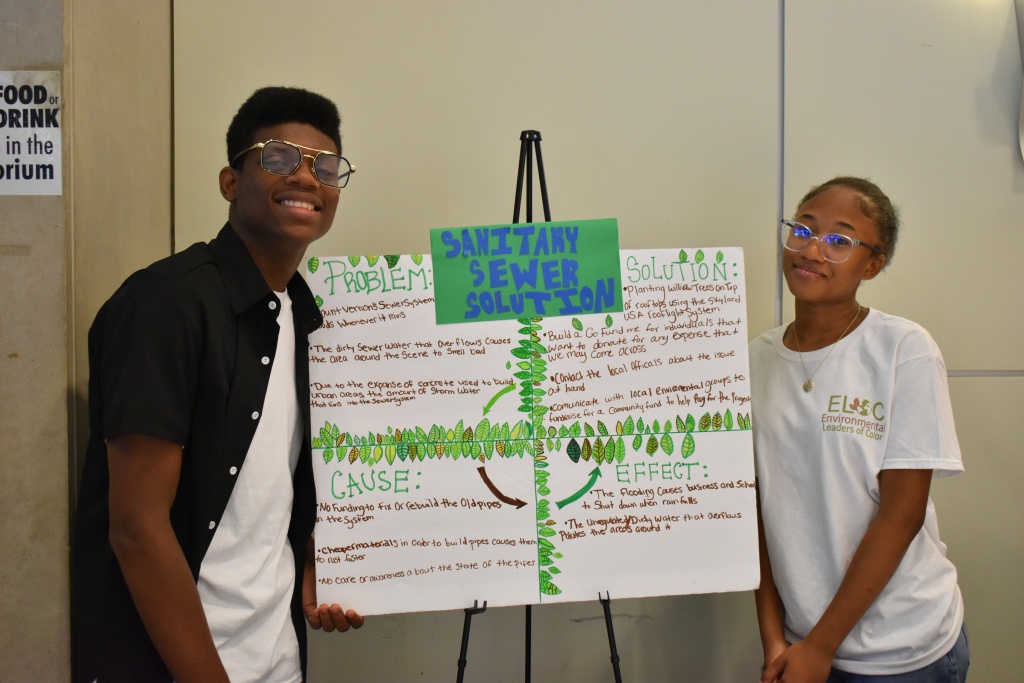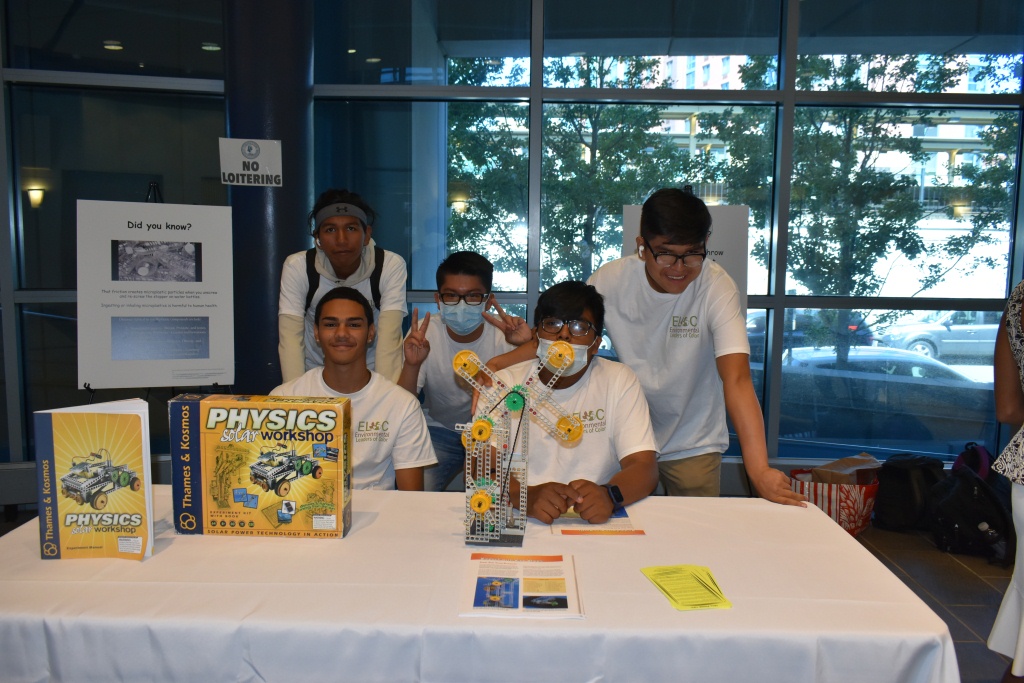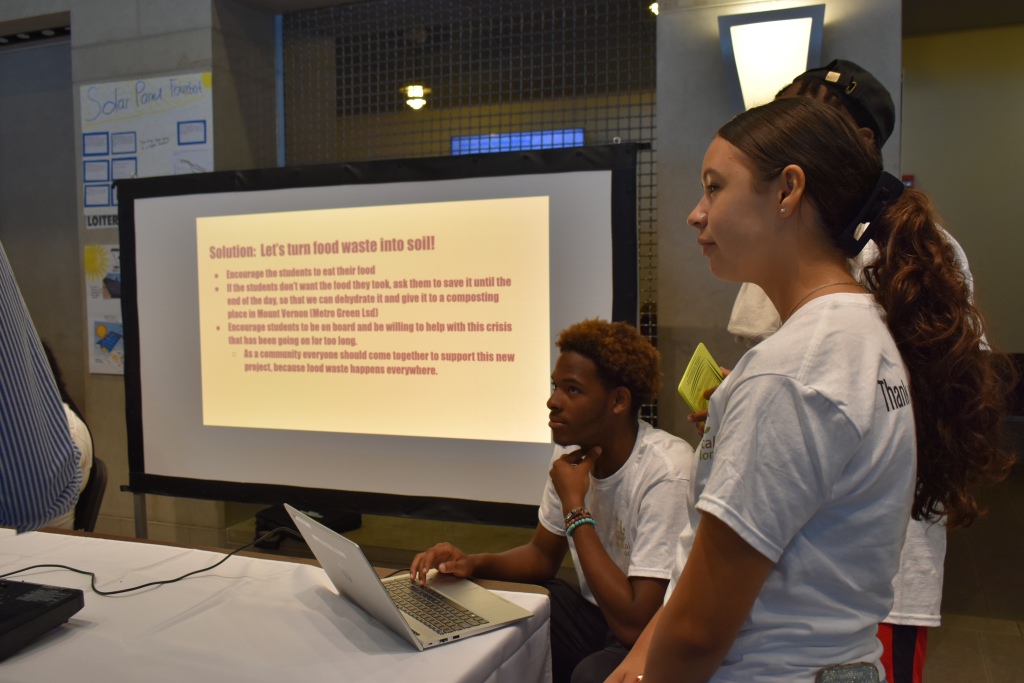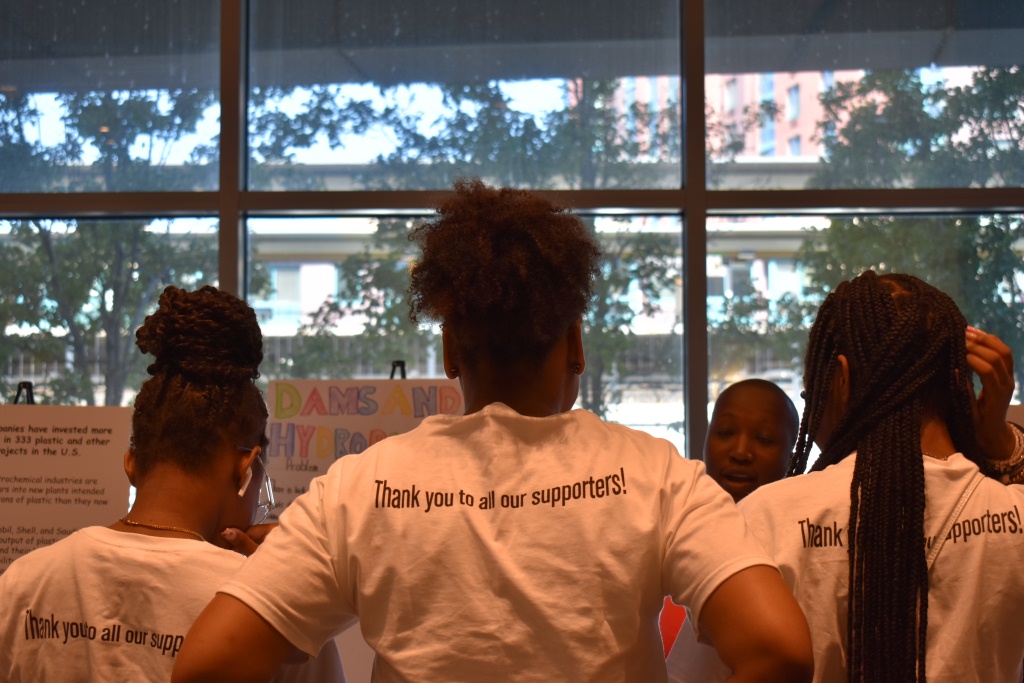Student Summer Energy & Environmental Program for Teens (SSEEPT)
A six-week STEM leadership academy that seeks to incubate the next generation of environmental advocates, innovators, and entrepreneurs from among disadvantaged communities.
2024 Student Summer Energy & Environmental Program for Teens (SSEEPT)
The topic for the 2024 - TBD
Operated under the auspices of Environmental Leaders of Color, Inc. (ELOC), the Student Summer Energy & Environmental Program for Teens (SSEEPT) is a six‐week STEM leadership academy that seeks to incubate the next generation of environmental advocates, innovators, and entrepreneurs from among disadvantaged communities in Westchester County, NY. To maximize the return on its resources, ELOC partners with existing summer camps that serve teenagers from underprivileged communities in the county. While the programs at our partner sites tend to focus on recreational and social activities, over the course of the program, SSEEPT staff supplements this with over 25 hours of engaging, hands‐on science experiments and demonstrations that are designed to acquaint participants with the principles and procedures of environmental science while exploring the broader social ramifications of, and possible solutions to, the climate crisis.
The SSEEPT is a freestanding, turnkey program requiring few resources from our partners—except for suitable space and students—while providing all required curricular materials, staff, and supplies. At the heart of the SSEEPT experience is a custom‐designed curriculum that aims to introduce high school students to the phenomenon of climate change—its underlying basis (i.e., the greenhouse effect), causes (e.g., fossil fuel consumption), and consequences (rising temperature, environmental degradation, social upheaval, etc.). Three times a week, three‐person teams with SSEEPT visit our partner sites to facilitate a variety of student‐run experiments, demonstrations, and collateral exercises, totaling 90 minutes per session, that allows participants to explore principles and concepts related to environmentalism through simple, hands‐on activities that require everyday household items. Along the way, participants get opportunities to practice the basic steps involved in doing scientific research and to observe, record, present, and discuss their findings with one another. The final week culminates in a series of team projects showcasing what they learned on graduation day.
The Topic: “Water: So Many Possibilities.”
Students will learn why clean drinking water is essential to human health, which methods and materials civilizations have used to purify water, how pre-industrial people developed ingenious technologies to collect and transport water to their cities and farms, how moving water can be converted into mechanical energy, how water is used to generate electric power, and why water is being looked at as a source of clean fuel.
- Mount Vernon
- New Rochelle
- Yonkers
- Portchester
- Ossining
- Peekskill
If you would like to introduce ELOC in your community, please get in touch with us.
Program Archive
2022 Student Summer Energy & Environmental Program for Teens (SSEEPT)
Operated under the auspices of Environmental Leaders of Color, Inc. (ELOC), the Student Summer Energy & Environmental Program for Teens (SSEEPT) is a six‐week STEM leadership academy that seeks to incubate the next generation of environmental advocates, innovators, and entrepreneurs from among disadvantaged communities in Westchester County, NY. To maximize the return on its resources, ELOC partners with existing summer camps that serve teenagers from underprivileged communities in the county. While the programs at our partner sites tend to focus on recreational and social activities, over the course of the program, SSEEPT staff supplements this with over 25 hours of engaging, hands‐on science experiments and demonstrations that are designed to acquaint participants with the principles and procedures of environmental science while exploring the broader social ramifications of, and possible solutions to, the climate crisis.
The SSEEPT is a freestanding, turnkey program requiring few resources from our partners—except for suitable space and students—while providing all required curricular materials, staff, and supplies. At the heart of the SSEEPT experience is a custom‐designed curriculum that aims to introduce high school students to the phenomenon of climate change—its underlying basis (i.e., the greenhouse effect), causes (e.g., fossil fuel consumption), and consequences (rising temperature, environmental degradation, social upheaval, etc.). Three times a week, three‐person teams with SSEEPT visit our partner sites to facilitate a variety of student‐run experiments, demonstrations, and collateral exercises, totaling 90 minutes per session, that allows participants to explore principles and concepts related to environmentalism through simple, hands‐on activities that require everyday household items. Along the way, participants get opportunities to practice the basic steps involved in doing scientific research and to observe, record, present, and discuss their findings with one another. The final week culminates in a series of team projects showcasing what they learned on graduation day.
To get a handle on the complex, interlocking problems climate change poses to humanity, SSEEPT& custom-designed curriculum is organized into four modules, each focusing on a a distinct aspect of climate change. In the opening week, a senior facilitator and assistants start with an exploration of the greenhouse effect, before turning, in subsequent weeks, to explore the phenomena of energy creation, the causes of environmental degradation, and then closes with a look at new, innovative solutions to the environmental crisis.
Each module consists of several workshops where the phenomenon under discussion is broken down into more discrete aspects that students can readily understand. In addition to handouts, video clips, and demonstrations that illustrate important STEM‐based principles and concepts central to the climate science field, students also perform group‐based experiments and demonstrations.
- Mount Vernon
- New Rochelle
- Yonkers
- Portchester
2021 Student Summer Energy & Environmental Program for Teens (SSEEPT)
Operated under the auspices of Environmental Leaders of Color, Inc. (ELOC), the Student Summer Energy & Environmental Program for Teens (SSEEPT) is a six‐week STEM leadership academy that seeks to incubate the next generation of environmental advocates, innovators, and entrepreneurs from among disadvantaged communities in Westchester County, NY. To maximize the return on its resources, ELOC partners with existing summer camps that serve teenagers from underprivileged communities in the county. While the programs at our partner sites tend to focus on recreational and social activities, over the course of the program, SSEEPT staff supplements this with over 25 hours of engaging, hands‐on science experiments and demonstrations that are designed to acquaint participants with the principles and procedures of environmental science while exploring the broader social ramifications of, and possible solutions to, the climate crisis.
The SSEEPT is a freestanding, turnkey program requiring few resources from our partners—except for suitable space and students—while providing all required curricular materials, staff, and supplies. At the heart of the SSEEPT experience is a custom‐designed curriculum that aims to introduce high school students to the phenomenon of climate change—its underlying basis (i.e., the greenhouse effect), causes (e.g., fossil fuel consumption), and consequences (rising temperature, environmental degradation, social upheaval, etc.). Three times a week, three‐person teams with SSEEPT visit our partner sites to facilitate a variety of student‐run experiments, demonstrations, and collateral exercises, totaling 90 minutes per session, that allows participants to explore principles and concepts related to environmentalism through simple, hands‐on activities that require everyday household items. Along the way, participants get opportunities to practice the basic steps involved in doing scientific research and to observe, record, present, and discuss their findings with one another. The final week culminates in a series of team projects showcasing what they learned on graduation day.
Consistent with our objective, we sought a curriculum that would resonate with young people of color to optimize successful student outcomes. We implemented an innovative approach characterized by the elements elaborated in our course outline (see below).
Our goal was to highlight scientific concepts that underlie the study of shifts in climate patterns and emphasize relevant applications in other fields. One example is the classic titration experiment, which illustrates the idea that persistent, incremental change to a system can produce a cataclysmic event when that system’s ability to absorb the change is exceeded. This was visually illustrated to the students during a demonstration of the classic acid-base titration experiment, using water, vinegar, lye, and phenolphthalein.
As to clean energy, we focused our mission on engaging participants in problem solving and instructed them in various solution-seeking methodologies and techniques. For instance, we provided specific examples of how real-world scientists and inventors solved complex problems they encountered on their way to achieving breakthroughs.
In summary, our goal was to conceptualize an innovative approach to reach our student participants by exposing them to scientific principles, while concurrently linking these with their real-life experiences.
Below is the Course Outline for the Program. Class trips were not feasible due to the constraints of COVID-19. We were fortunate to have several important individuals contribute to the education of our students in the role of visiting lecturers. These included climate change entrepreneurs and elected officials. In addition to providing valuable insight about how they advance the cause of climate change in their chosen professions, they served as important role models to the students.
- Mount Vernon
